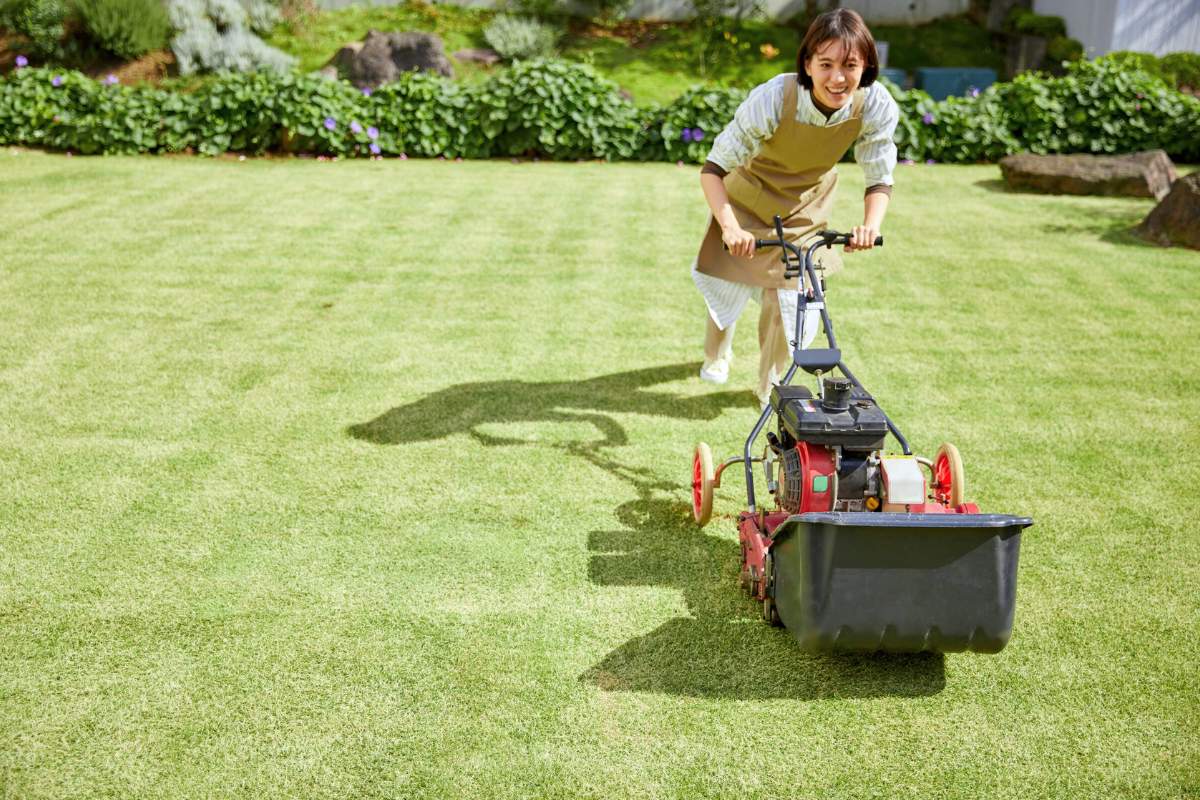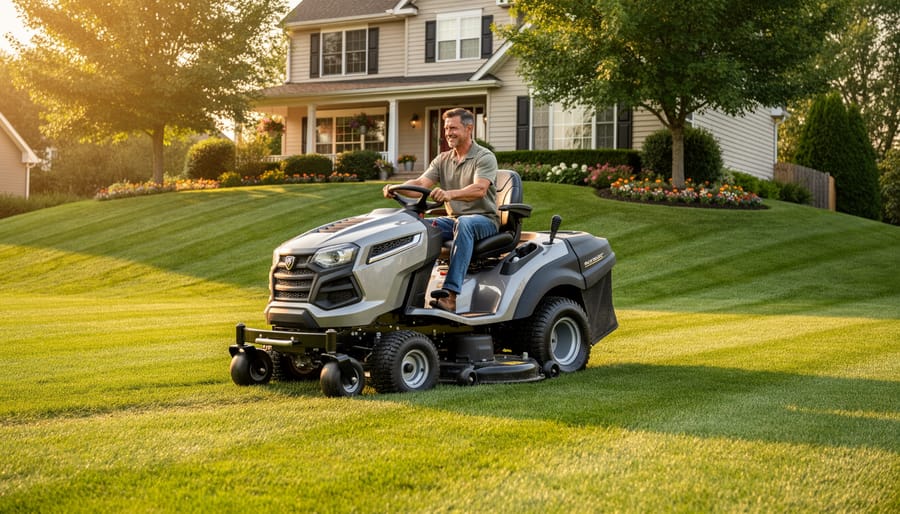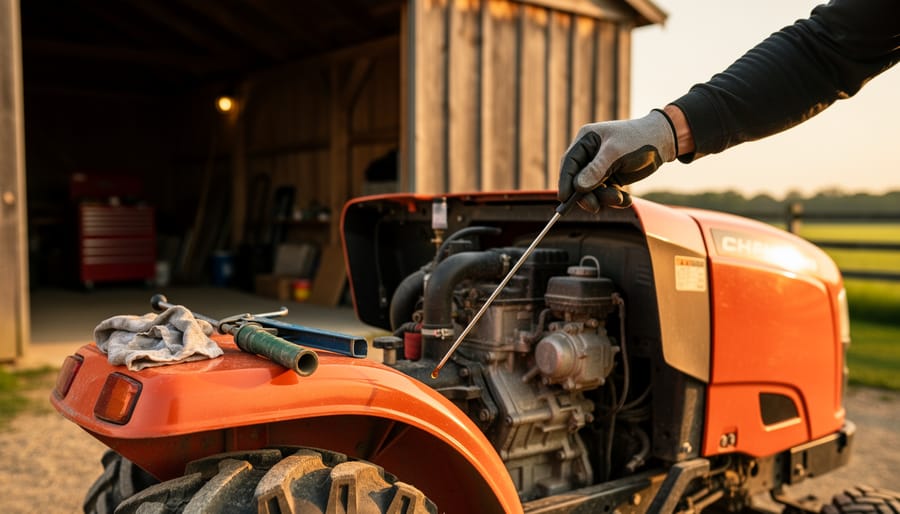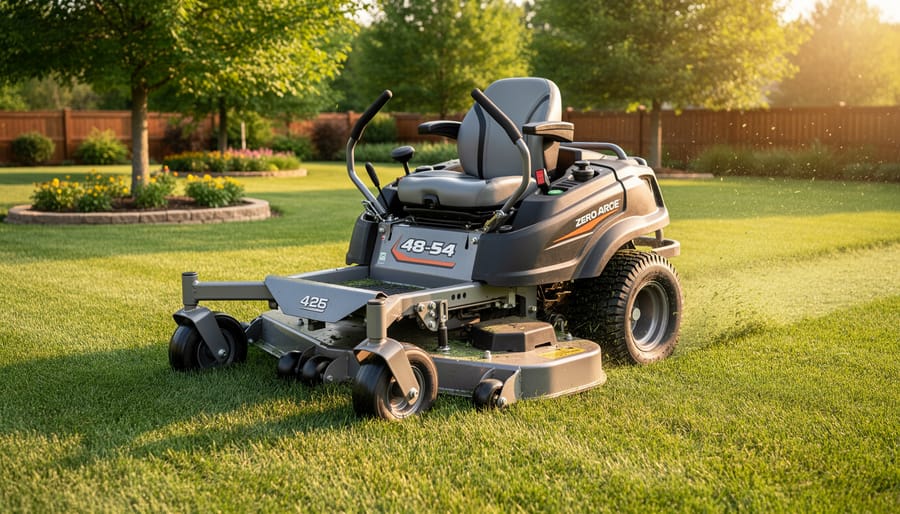Keeping a lawn healthy and well-presented depends on more than just cutting the grass when it looks long. The way the grass is mown affects its growth, appearance, and long-term condition. Different lawn mowing methods create different results, from a simple tidy finish to patterns that encourage stronger, more even growth.
Professional landscapers often rely on specific mowing techniques to achieve consistent results across various lawn types. Homeowners can also benefit from understanding the differences between manual tools, powered machines, and newer sustainable options that reduce environmental impact.
By exploring traditional approaches alongside modern innovations, it becomes clear that mowing is not a one-size-fits-all task. Each method offers distinct advantages, whether the goal is precision, efficiency, or sustainability.
How Landscapers Use Lawn Mowers
Landscaping contractors select mowers based on lawn size, terrain, and the finish required. They often use professional-grade machines that balance efficiency with precision.
Commercial operators commonly rely on zero-turn mowers. These machines provide wide cutting decks, tight turning ability, and faster mowing times, making them suitable for large properties and open spaces.
For smaller or more detailed areas, landscapers may use self-propelled walk-behind mowers. These reduce physical effort and allow better control on sloped or uneven ground.
Some professionals also keep cylinder mowers for fine lawns. These deliver a clean, scissor-like cut that is ideal for sports fields or formal garden settings where appearance is important.
In addition to choosing the right mower, landscapers adjust cutting height and mowing patterns to suit grass type and seasonal conditions. This ensures healthy regrowth and a consistent appearance across the lawn.
They often combine mowing with edging and trimming. This creates a uniform finish that distinguishes professional lawn care from basic maintenance.
Manual Lawn Mowing Methods
Manual techniques rely on physical effort and simple tools rather than engines or fuel. These approaches suit smaller lawns, areas requiring precision, or situations where noise and emissions need to be avoided.
Push Reel Mowing
A push reel mower uses a set of helical blades that rotate as the user pushes it forward. The blades cut grass in a scissor-like motion, producing a clean and even finish. This method works best on flat, small to medium lawns with grass kept at a moderate height.
Push reel mowers are eco-friendly, requiring no fuel or electricity. They also operate quietly, making them suitable for residential areas. Maintenance is minimal, usually limited to blade sharpening and occasional lubrication.
However, they demand more physical effort compared to powered mowers. Thick or overgrown grass can be difficult to cut, and uneven ground reduces efficiency. Despite these limitations, many homeowners prefer them for their low running costs and precise cut.
Scythe Cutting
A traditional scythe features a long curved blade attached to a wooden handle. When used correctly, it slices through tall grass with a smooth swinging motion. This method is effective for larger areas, especially where grass has grown too long for a reel mower.
Scythes require skill and practice. The blade must be kept sharp through regular honing, and proper technique is necessary to maintain efficiency and safety. Once mastered, scything can clear grass quickly without fuel or noise.
This tool is especially useful in rural properties or for maintaining meadows and orchards. Unlike powered machines, a scythe causes minimal disturbance to soil and wildlife. It also handles uneven terrain and thick vegetation better than most manual alternatives.
Shears and Hand Tools
Hand shears and edging tools allow for precise trimming in areas a mower cannot reach. These tools are commonly used around garden beds, pathways, and fences where accuracy matters more than speed.
Shears come in different types, including long-handled edging shears for borders and short-handled grass shears for detailed work. They provide control but require time and effort, making them unsuitable for large lawns.
Regular sharpening ensures clean cuts, which helps maintain grass health. While slower than other methods, hand tools remain essential for fine finishing and small patches of lawn where larger equipment is impractical.
Powered Lawn Mowing Techniques
Powered lawn mowers provide consistent cutting results with less physical effort compared to manual methods. Each type uses a different cutting mechanism and design, which makes them better suited to specific lawn conditions and grass types.
Rotary Mowing
A rotary mower cuts grass using a horizontally spinning blade that rotates at high speed. This design allows it to handle a wide range of grass lengths, including tougher or uneven growth. It works well on most Australian lawns, especially those with mixed grasses.
These mowers are versatile and can manage small to large yards. Many models include adjustable cutting heights, making it easy to adapt to seasonal growth patterns. They are also effective on slightly uneven ground where other mowers may struggle.
Key advantages:
- Suitable for general-purpose use
- Handles thicker grass and weeds
- Widely available in petrol, electric, and battery-powered versions
While rotary mowers are practical, they may leave a slightly rougher cut compared to precision mowers. Regular blade sharpening helps maintain cleaner results.
Cylinder Mowing
A cylinder mower uses a set of helical blades that trap and cut grass against a fixed bottom blade. This creates a very clean and even finish, similar to professional sports turf. It is best suited for fine, low-cut lawns such as couch or bentgrass.
These mowers require a flat, well-maintained surface to perform effectively. They are less forgiving on uneven ground and may struggle with long or coarse grass. Routine maintenance, including blade adjustment and sharpening, is essential to preserve cutting quality.
Best suited for:
- Lawns maintained at low cutting heights
- Homeowners seeking a striped, manicured appearance
- Smaller areas with consistent grass types
Cylinder mowers deliver precision but demand more care and regular upkeep than rotary mowers.
Hover Mowing
Hover mowers use an impeller that creates a cushion of air, allowing the mower to float slightly above the ground. This design makes them easy to manoeuvre in tight spaces, on slopes, and around obstacles such as trees or garden beds.
They typically use a rotary-style blade but are lighter and easier to handle than traditional wheeled models. This makes them useful for irregularly shaped lawns or areas with steep gradients where pushing a conventional mower is difficult.
Notable benefits:
- Lightweight and highly manoeuvrable
- Effective on sloped or uneven terrain
- Requires less effort to push and turn
However, hover mowers may not cut as evenly on very thick or tall grass. They are often better suited for smaller lawns or secondary mowing tasks rather than large, formal areas.
Innovative and Sustainable Mowing Approaches
Modern mowing methods focus on efficiency, reduced environmental impact, and improved lawn health. Technology and equipment design now allow homeowners to maintain grass with less fuel, less waste, and more consistent results.
Robotic Lawn Mowers
Robotic lawn mowers operate autonomously within a set boundary, trimming grass regularly without human effort. They use sensors to detect obstacles and adjust their path, ensuring even coverage across the lawn.
Most models cut small amounts frequently, which helps grass stay healthier compared to infrequent heavy cuts. This method also reduces visible clippings because fine cuttings decompose quickly.
Key benefits include:
- Time saving: Minimal supervision required.
- Consistency: Regular mowing produces an even surface.
- Quiet operation: Much quieter than petrol mowers.
However, they require an upfront investment and may need boundary wires or GPS-based systems for accurate navigation. They suit smaller to medium lawns best, though advanced models can manage larger areas.
Mulching Mowers
Mulching mowers finely chop grass clippings and return them to the soil. Instead of collecting clippings, the mower blade cuts them into tiny pieces that act as natural fertiliser.
This process improves soil health by adding organic matter and nutrients back into the lawn. It also reduces the need for chemical fertilisers, lowering maintenance costs.
Advantages include:
- Reduced waste: No need to dispose of clippings.
- Nutrient recycling: Supports a healthier lawn.
- Moisture retention: Helps soil hold water during dry periods.
Mulching works best when mowing regularly and not removing more than one-third of the grass height at a time. Cutting long or wet grass can cause clumping, so timing is important.
Electric and Battery-Powered Mowers
Electric and battery-powered mowers provide a quieter and cleaner alternative to petrol models. They produce no direct emissions and are easier to start and maintain.
Battery models offer cordless convenience, while corded versions are lighter but limited by cable length. Advances in lithium-ion batteries now allow many cordless mowers to run long enough for medium-sized lawns.
Eco-Friendly Practices
Eco-friendly mowing focuses on reducing environmental impact while supporting lawn health. Cutting grass at the right height, usually around 5–7 cm, encourages deeper roots and reduces water use.
Alternating mowing patterns prevents soil compaction and helps grass grow upright. Leaving clippings on the lawn, when conditions allow, returns nutrients naturally.
Other practices include:
- Sharpening blades for clean cuts that reduce plant stress.
- Avoiding mowing during heatwaves to prevent damage.
- Scheduling mowing in the morning or evening to conserve moisture.
These approaches reduce fuel use, support biodiversity, and maintain a resilient lawn without relying heavily on fertilisers or excessive watering.




